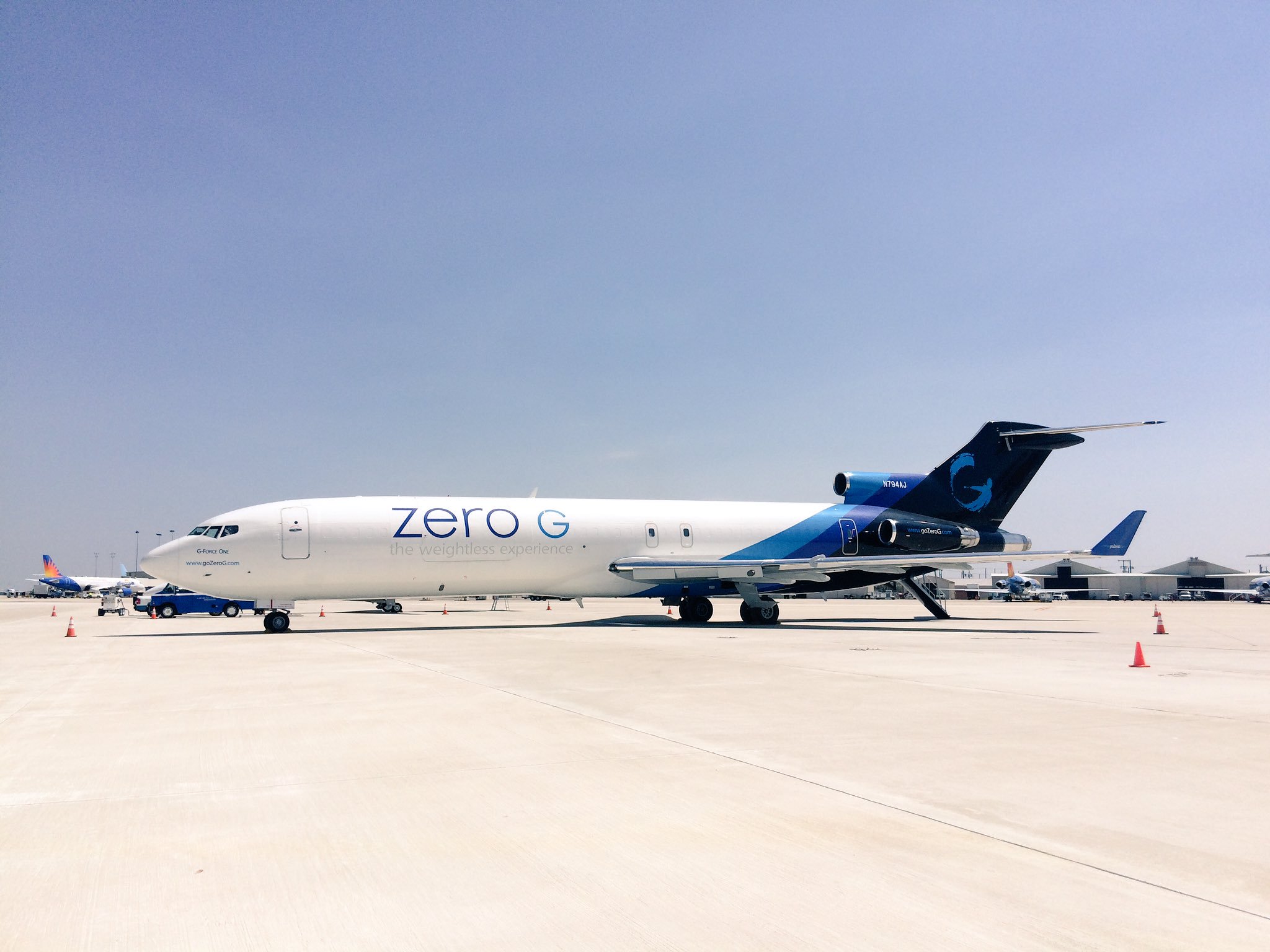By Linda Herridge
NASA’s John F. Kennedy Space Center
Spaceflight sends people and payloads into an unforgiving environment filled with dangers like radiation and challenges like microgravity with the goal of exploring the secrets of the universe. Before that happens, testing in analog missions on Earth can simulate as closely as possible parts of space’s extreme environment.
One of these analogs is parabolic flight, which creates brief episodes of microgravity and offers researchers the opportunity to test how equipment and technologies respond to weightlessness. However, conducting experiments in this simulated microgravity environment often brings its own challenges the teams must solve.
Space Foundry Inc. recently boarded a parabolic flight with its plasma jet printer, a technology intended to create electronic components in space. The initial microgravity flight attempt occurred over the Gulf of Mexico aboard a modified Boeing 727. After the aircraft achieved microgravity, the company’s plasma jet printer failed to perform properly.
As it prepared for its second attempt, the company – a spinoff founded by former Ames Research Center researchers in California’s Silicon Valley – discovered a grounding issue with the printer. So before going airborne again, they decided to consult members of NASA’s Exploration Research and Technology (ER&T) and Small Business Innovation Research (SBIR) programs.
This team effort across programs is one example of the many ways NASA helps foster the commercial space industry and support small businesses across the nation.
“SBIR is entirely about providing support to small businesses, who in turn create innovations that contribute to NASA’s missions, provide societal benefit, and grow the U.S. economy,” said Mike Vinje, lead for SBIR/Small Business Technology Transfer (STTR) activities in ER&T at Kennedy. “This was an opportunity for us to go outside the box to help solve a problem.”
Space Foundry brought their printer to Kennedy, where NASA Partnership Coordinator Doug Gruendel assembled a team to help. During the collaboration, the company identified and replaced some fractured wiring and corrected a grounding issue.
Joining the Kennedy team were Earl Adams, the parabolic flight campaign manager from NASA’s Armstrong Flight Research Center in California, and Alexander Van Dijk, a technologist from NASA Ames.
Adams advised the company to duplicate their problems on the ground, which led to the discovery of a WiFi connection not properly secured. Adams also arranged for training for the Space Foundry team and taught them how to work with and secure the wiring in the experiment to function better in a microgravity environment.
This isn’t the first time that Adams and his team have helped solve problems as part of the “fly-fix-fly” approach to testing.
“This was an opportunity for NASA to pass on its organizational knowledge and information about the microgravity environment to a small business,” Vinje said. “It was both a NASA and company learning experience.”
With the issues resolved, Space Foundry returned to Fort Lauderdale and achieved a successful parabolic flight. The plasma jet printer printed silver lines, pads, interdigitated electrodes, and a WiFi antenna in microgravity.
“In this case SBIR, ER&T Flight Opportunities, and the parabolic campaign all were working within our boundaries,” Vinje said. “All had a chance to contribute and provide some assistance to make another mission successful.”
Plasma jet printing in microgravity can allow astronauts to build or repair electronic components in space. Development of these applications is part of NASA’s On-Demand Manufacturing Electronics project through the Game Changing Development program in NASA’s Space Technology Mission Directorate (STMD).
The flights, operated by Zero Gravity Corporation, were supported by an SBIR Phase II-E award, a type of contract that provides small businesses with matching funds for continued development of their innovations, funded jointly by NASA’s SBIR/STTR and Flight Opportunities programs, both part of STMD.





























